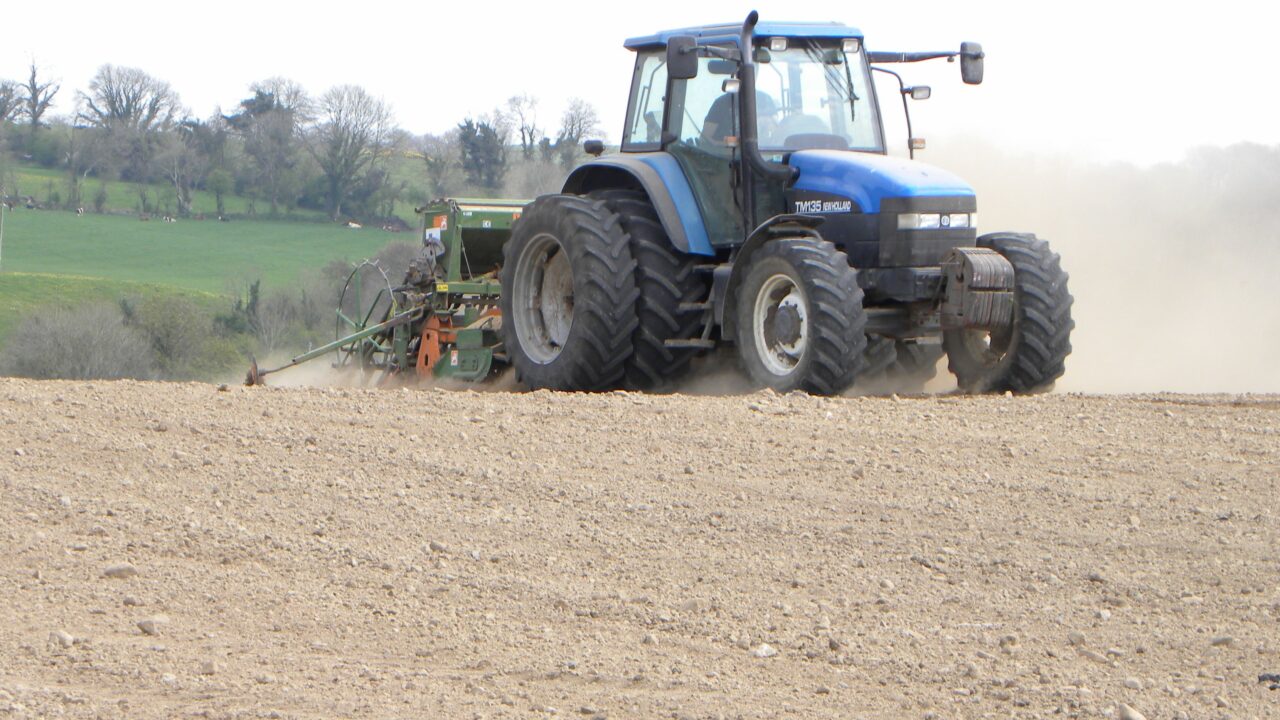Across the country, tillage farmers are getting ready for the busy spring season and maintaining and preparing machines for the work ahead is a part of that.
Particular care should be taken when moving heavy items such as tyres, Teagasc is advising and, when possible, use a mechanical device for this task.
It highlights that it’s particularly important to ensure that vehicles are securely supported when tyres and rims are removed.
Last year, due to a number of fatal accidents involving large tyre inflation in 2014, the Health and Safety Authority (HSA) issued a large tyre inflation safety alert.
The HSA has the following advice when it comes to inflating tyres:
Dangers of explosive energy stored in tyres
Inflated tyres contain a large amount of stored energy. For example, the sidewall of a typical commercial vehicle (CV) tyre typically has over 34t of force acting on it.
Tyres are designed to withstand this but if they are damaged or used while flat [run flat], or significantly underinflated, they may fail.
The force can then be released explosively and result in a destructive air blast and the ejection of high-speed particles. These types of tyre explosion have led to numerous deaths at work.
Risk of failure
Removal, replacement and inflation of tyres is an extremely common practice, so it may seem a simple task. But it can cause very serious injury and death from:
- Explosion of the tyre or disintegration of the wheel during inflation.
- Manual handling of the tyre and wheel.
- Collapse of an elevated vehicle.
Cuts and splits should be clearly visible by inspection and there are industry standards on whether a repair should be attempted.
However, damage to the internal steel or textile cords may not be obvious. This internal damage may not become obvious until the tyre is reinflated and a bulge occurs.
At this stage, the additional strain placed on the adjacent cords can cause them to break in rapid succession, until the casing splits apart violently. This is commonly known as a ‘zipper-failure’
How to reduce the risk of violent explosion
Before deflating a tyre, check the pressure and chalk the reading on the tyre wall. Remember, low tyre pressure may have caused tyre wall damage.
Do not inflate any tyre that has been significantly under-inflated until it has been adequately checked.
If in doubt, DO NOT re-inflate the tyre.
Do not use airlines without either a functioning pressure gauge or pressure control device being fitted.
Stay outside the likely explosion trajectory, when re-inflating a tyre.
Watch and listen for signs that might indicate a zipper failure. If you suspect a problem, do not approach the tyre to deflate it – use the quick-release connection at the operator’s end of the hose.
Further safety information is available on the HSA website.
